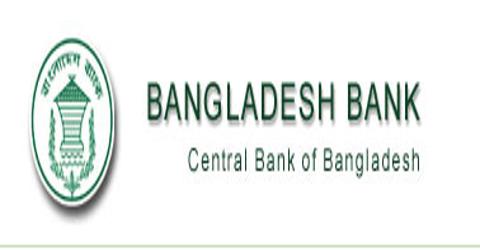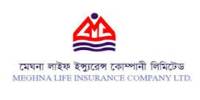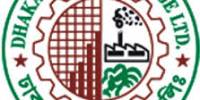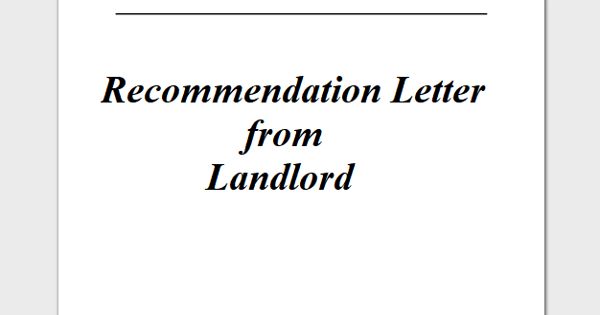Bangladesh Bank, the central bank of the country, was established as a body corporate with effect from 16th December, 1971. The general superintendence and direction of affairs and business of the Bank are entrusted to a nine member Board of Directors which consists of the Governor as chairman, a Deputy Governor, three senior government officials and four persons having experience and proven capacity in the fields of banking, trade, commerce, industry or agriculture – all nominated by the government.
Executive Summary
In order to prepare our term paper on “Bangladesh Bank”, we have included the functions, responsibilities, and practices of department of banking inspection and off site supervision of Bangladesh Bank.
We have shown the vital elements of banking operation which are included in banking inspection report prepared by an inspector appointed by the governor, Bangladesh bank for use in the supervision of the bank.
In addition, we have included the process and guidelines followed by the inspector in preparing the inspection report. We have explained the points included in the head office inspection report with the help of inspection manual followed by department of banking inspection of Bangladesh Bank.
The information contained in the inspection report is based upon the books and records of the bank, upon statements made to the inspectors by officers and employees, upon information obtained from the sources believed to reliable and presumed by the inspector to be correct.
The supervision of schedule banks is one of the significant functions performed by Bangladesh bank, so in our term paper, we have tried our best to include all the relevant data regarding this topic.
Bangladesh Bank in Brief
Bangladesh Bank, the central bank of the country, was established as a body corporate vide the Bangladesh Bank Order, 1972 (P.O. No. 127 of 1972) with effect from 16th December, 1971. The general superintendence and direction of affairs and business of the Bank are entrusted to a nine member Board of Directors which consists of the Governor as chairman, a Deputy Governor, three senior government officials and four persons having experience and proven capacity in the fields of banking, trade, commerce, industry or agriculture – all nominated by the government.
The board, which is the highest policy making body, meets at least six times a year and at least once every quarter under the chairmanship of the Governor. The Governor, appointed by the government as the chief executive officer, directs and controls all the affairs of the Bank on behalf of the Board.
The broad objectives of Bangladesh Bank are:
- To regulate the issue of the currency and the keeping of reserves
- To manage the monetary and credit system of Bangladesh with a view to stabilizing domestic monetary value
- To preserve the par value of the Bangladesh Taka
- To promote and maintain a high level of production, employment and real income in Bangladesh; and to foster growth and development of the country’s productive resources for the national interest
Machineries of Bangladesh Bank for Inspection
- Department of Banking Inspection (DBI)
- Financial Institution Department (FID)
- Money Laundering Prevention department (MLPD)
- Department of off site supervision (DSO)
Now descriptions;
- Department of Banking inspection (DBI)-1
Department of Banking Inspection-1 (DBI) conducts comprehensive inspection of the private commercial banks including Islami Banks and Foreign Commercial Banks according to a predefined annual inspection program. Branches of the a foreside banks which are authorized to carry on foreign exchange business, designated as Authorized Dealers also come under the purview on site inspection of DBI-1. On site inspection of banks including authorized dealers are carried out according to the annual inspection program chalked out by the department well ahead of the beginning of each calendar year. DBI-1 has also the responsibility to follow up inspection reports of the banks including authorized dealers and to enforce implementation of the recommendations contained therein and rectification of irregularities.
DBI-1 through on site inspection of the financial statements and books of accounts of private and foreign commercial banks undertakes to evaluate the financial position, operating soundness and quality of management of banks. In evaluating the overall performance of the banks DBI-1 also makes CAMEL rating of the head office of banks on the basis of the crucial dimensions capital adequacy, asset quality, management competence, earning capacity, and liquidity position. CAMEL rating of banks acts as an early warning system for the central bank to determine the level of supervisory concern and plan of action needed for banks not considered to be sound.
On site supervision of the authorized dealers of private and commercial banks is undertaken to ensure that foreign exchange business such as export and import, trade, in ward- out ward remittance and all other dealings in foreign exchange are done strictly in accordance with the foreign exchange regulation act and the guidance’s for foreign exchange transactions issued by Bangladesh Bank.
Department of Banking Inspection (DBI)-2
Department of Banking Inspection conducts comprehensive inspection of all the NCBs, Specialized Banks, and financial institutions like BSRS, BSB, Basic bank Ltd, Ansar VDP Unnayan bank, Grameen bank and ICB in accordance with the scheduled outlined in the Annual Inspection Program. Branches of a foreside banks authorized to deal in foreign exchange transactions come under the purview of DBI-2. Moreover, money changes are also under the purview of inspection of DBI-2.
An inspection team is required to evaluate the financial position, operational soundness, and management quality of bank branches including review of foreign exchange transactions. During head office inspection, CAMEL rating of the banks is also done highlighting the core indicators.
Some of the key areas of inspection are:
- Evaluating of assets with emphasis on classification & provisioning
- Assessing capital position to work out required capital
- Verification of artificial manipulation of figures relating to profit
- Review of liquidity position so that required amount of CRR & SLR is maintained
- Evaluation of loan operation, project financing, and other off balance sheet activities
- Analysis of large loans and concentration of credit
- Incidence of fraud, forgery, and action there of
- Evaluation of management quality as well as customer services at the branch level
- Compliance of various circulars issued by BB as well as respective banks.
- Financial institution department (FID)
Financial institution department was created under financial institution act, 1993. Major functions are:
- Issuance of license for non banking financial institution
- Formulation of policies relating to functions of NBFIs
- Monitoring relevant compliance issues through on site and off site supervision
Presently FID supervises 28 NBFIs of which 1 is fully government owned, 2 are public sector join ventures, 10 are private sector joint ventures and the rest 15 are locally owned private sector financial institutions.
- Money Laundering Prevention department (MLPD)
As per money laundering act (act 7 of 2002) the responsibility and power of Bangladesh Bank for prevention of money laundering activities are as follows:
In order to abate and prevent money laundering activities or crimes related there to Bangladesh Bank (Anti money laundering department) will;
- Investigate offence relating to money laundering
- Supervise and observe the activities of banks, financial institutions, and other organizations involved in financial activities.
- Call banks, financial institutions and other organizations involved in financial activities for submission of reports on any subject related to money laundering
- Review the report received under (3) above and take proper steps on the basis of those
- Arrange training for the offices and employees of banks, financial institutions and other organizations in financial activities.
4. Department of off site supervision (DOS)
This department supervises and monitors the functions of the schedule banks in Bangladesh through off site surveillance. Through off site supervision the bank continuously analyses the overall position particularly financial condition of the scheduled banks on the basis of five crucial indicators of banking operation, capital adequacy, asset quality, management efficiency, earning power and liquidity position. Ratings are done on a scale of 1 to 5 in ascending order of performance deficiency. A bank is identified as problem bank if it has a CAMEL composite score of 4 or 5. Such problem banks are then brought under the fold of problem bank monitoring department for closer and more intensive supervision.
This department also performs the following functions:
- Asses the overall credit and liquidity position of the banking system
- Approves large loans extended by the scheduled banks.
- Monitors maintenance of reserve requirement by scheduled banks.
- Review approval procedures and techniques followed by the scheduled banks in approving loans amounting to taka. 10 million and above to ensure proper compliance of standard practices.
- Monitors capital adequacy of the scheduled banks, position of non performing assets and performance of top 20 defaulters.
- Maintains accounts of the liquidated banks and deals with the movable and immovable properties of the liquated banks as liquidator.
- Prepare and submits quarterly memorandum detailing financial conditions of the nationalized commercial banks to the board of directors of Bangladesh bank.
Summary of assets subject to adverse classification:
Substandard Assets: Its inadequately protected by the current sound worth and paying capacity of the obligor if any. They are characterized by the distinct possibility that the institution will sustain some loss if the deficiencies are corrected. Doubtful assets: it has all the weaknesses inherent in one classified substandard with the added characteristic that the weaknesses collection or liquidation in full, on the basis of currently existing facts, conditions and values.
Loss assets: It considered uncollectible and of such little value that continuance as bankable assets are not warranted but rather it’s not practical or desirable to defer writing of this basically worthless asset even though practical recovery may be affected in the future. According to the BCD Circular no.34 of 1989 will be applied to all classified assets and BCD Circular no.20 of December, 1994. Other appropriate deductions are made from the asset to establish the base for the amount of the provision to be established. The individual inspection report of branch offices will include on report page 3 only a summary of the classification of assets of the branch. It’s the responsibility of the inspector to discuss his classifications with the branch management.
Detailed Statement of Assets Subject To Adverse Classification
Any loan that represents 1% of the total capital and reserves of the bank should be listed separately. Small loan can be shown in group totals. And the inspector in charge to decide what loans will be shown and what will be listed individually. Large branch loans representing 1% of the total capital and reserves of the bank should be shown separately.
Large Lines and Concentrations of Credit: This schedule is for the purpose of displaying all unduly large direct and indirect of credit to the same of the related interests, regardless of whether adversely classified in whole or in the part or of whether shown elsewhere in the inspection report. Loans of all types, overdrafts and all other forms of credit extensions are to be considered in determining a concentration.
Large Lines: Large line are objectionable if they violate a basic principle of sound banking, adequate risk diversification. The schedules sound includes only lines which are large in relation to the capital structure of the bank. The schedule is not intended to include small lines which are large in the sense that they are disproportionate to the borrower’s resources. All lines that represent 15% or more of the Capital and Reserve of the bank should be listed. Other large lines that represent a significant portion of the Capital and Reserves of the bank may be listed. This will be at the discretion of the inspector.
Concentrations of Credit: A line to an individual firm or obligor which is large in relation to the banker’s total capital structure is obviously a concentration, are extensions to two or more obligors, the repayment of which is based upon the same kind of collateral or the same type of production or business. In scheduling a concentration of credit which is composed of extensions to several different individuals or firms, the relationship between the advances should be made clear. The same is true of extensions to closely allied interests, the repayment of whose obligations is inter-dependent by reason of affiliated ownership or control. It is nearly impossible to list all types of concentrations which might exist. And an Inspector should use their informed judgment in deciding the extent of investigation necessary to disclose report of examination. The handling of concentrations in the report of examination is flexible and requires some degree of inspector judgment. A guideline for listing concentrations in the inspection report should be 25% or more of the bank’s capital structure.
Extension of Credit to Directors, Shareholder and Their Interests and Executive Officers:
Indebtedness as used in this schedule includes all direct and indirect extensions of credit regardless of form. In general, a person may be said to be substantially interested in a concern, or if he is an active officer, or director of that concern, or if he has a substantial ownership interest. A substantial ownership interest need not be voting control, but it should not be interpreted as the ownership of only few shares.
Comments in this schedule with respect of management loans should be extremely brief. If a line is adversely classified or otherwise subject to comment, it will have been toughly discussed in other schedules of the report, to which reference may be made for supporting information. The total line and its classification are all that are necessary at this point. If a loan is not subject to adverse classification only the total line need be shown, since other details would be superfluous.
Duplications Within and Between Groups:
All duplications within and between groups should be eliminated in the recapitulation at the head of the schedule. If a line is direct in one instance and indirect in another the indirect should be eliminated. Notations should be made in the schedule of all lines duplicated in whole or in part so that a check can be made at any later date as to the accuracy of the eliminations.
Analysis of Aggregate Management Indebtedness:
Whenever there is evidence of self serving upon the part of a bank’s management credits is large and their quality questionable certain computations, in addition to the recapitulation at the head of the schedule, will be useful in illustrating the situation. Accordingly, a summarization of the classification of all management items at the conclusion of the schedule will at times prove valuable. This memoranda data will serve as a basis for calculations, showing the percentages of total credit extensions to managements and their interests which are adversely classified.
It is difficult to set any maximum percentage ratio beyond which management loans should not expand. There is no basis for saying that management loans should not exceed 10%, 50%, 100% or some other particular percentage of book capital. Nor is there any basis of assuming that management loans should never exceed a certain percentage of total assets or total loans. It can be said, however, that all management loans should be of high quality. Ratios designed to point out the general quality of such loans are therefore more practical than ratios comparing their aggregate with some other balance sheet segregation.
Nevertheless, comparisons of total management indebtedness with book capital, total loans, or other balance sheet aggregates will from time to time be useful and persuasive in lending emphasis to the inspector’s remarks in a discussion of management loans. If the comparison is with capital, the most advisable denominator is total book capital. The inclusion of both direct and indirect indebtedness in the numerator is usually, although not invariably, justified. A comparison of management loans with book capital will reflect the extent to which capital funds have been lent to the management and their interests. In this particular ratios based upon total assets or total loans and investments.
Loans Not Supported By Adequate Credit Information:
In here the documentation expectations should be listed under comments. Only large loans should be reported here. A guideline is 1 corer and above. Examples of technical expectations that should be listed include:
- Missing or State Financial Statement
- Missing or State Guarantees Or State Financial Statements For Guarantors
- Missing or Stale Cash Flow And Income Information
- Stale or Missing Borrowing Resolutions/Partnership Agreements
- Missing Security Agreements
- Unrecorded Lines on Collateral
- Inadequate or Missing Appraisals
- Missing or Expired Hazard Insurance
- Missing Rent Rolls/Tenant Listing
Lending Policies and Asset Quality:
With respect to specific policies, inspectors should review loan, investment and significant operating policies relating to asset quality. These policies should be in written from, approved and reviewed periodically by the board of directors, and communicated to all appropriate bank personnel. When assessing loan policies consideration should be given to the following:
- Internal loan approval, review and monitoring and control procedures;
- Loan reports used by management to monitor lending practices;
- Loan processing procedures and controls;
- Adequacy of staffing, including number, competence, reporting lines, and compensation schemes;
- Individual lending authorities;
- The organization and completeness of the credit files;
- Collateral administration and evaluation procedures;
- Procedures for evaluating credits;
- Collection and workout procedures;
- Procedures for renewing or extending loans;
- The accrual and capitalization of past due interest and prepaid interest;
- Any other unfavorable practice that may result in poor asset quality.
Asset Quality:
An accurate assessment of asset quality is critical to evaluating the overall condition of the bank. Analysis should be straight – forward and, if all conditions are satisfactory, a brief statement to this effect addressing each factor listed below.
In assessing the quality of assets, the LEVEL of classified credits refers to their total volume and amount in relation to off-balance sheet items.
SEVERITY refers to the relative distribution of credits subjects to classification among the substandard, doubtful, or loss classifications and the effect on the bank’s financial condition.
TREND refers to whether or not the overall asset quality has been improving or deteriorating over time or since the previous examination.
Capital Account Analysis:
Totals book capital as defined by Bangladesh Bank is shown here plus provisions made for adversely classified loans and provisions made for other classified assets.
Deducted from the above sub-total amount are the following:
- Shortfall in provision requirement against classified assets.
- Shortfall in the 1% General Provision against unclassified loans.
- Liabilities not shown on the bank’s books.
- Other deductions that may be classified by the inspector.
Following the above deductions, the inspector arrives at the bank’s adjusted capital position. There is not any question that a bank’s adjusted capital position is one of the most important indicators of the health of a financial institution. A bank’s losses accumulated over a number of years and sometimes carried in Other Assets should be classified loss and deducted from the bank’s capital. In reviewing the bank’s statement of Assets and Liabilities, the inspectors should review carefully all accounts to determine if any losses exist and classify them accordingly.
Comparative Statement of Income and Expenses and Changes in Equity capital Page 5
The comparative report of income and expenses should reflect the trend of a bank’s operations over the past four fiscal years of operation. The recurring, current operating earnings less recurring, current operating expenses should be shown separately to reflect the current operating earnings of the bank as distinguished from non-recurring profits, recoveries, and charge-offs, as well as dividends and income-taxes. Income furnishes a year to year and bank to bank comparison which is a more accurate measure of the bank’s earning capacity than its net increase to capital account.
It is essential that a bank’s earning capacity be known, for out of such earnings the bank must provide for losses and furnish a fair return to its stock holders. Earnings are necessary for any growing bank which seeks to attract new investment capital.
The scheduled is to be prepared on book basis. Any income which the inspector believes has been improperly taken into profit and loss should be classified loss elsewhere in the report. Any loss classification of cash credits and overdrafts will normally include the portion which represents accrued interest. In other instances in which the bank might substantially over-accrue income, or fail to accrue substantial expenses, i.e., interest due on Fixed Deposits, the inspector will note that fact by showing the amount “Liabilities not shown on books”.
While the several items of income and expense required for this form should be self-explanatory, the inspector will find the bank’s book frequently inadequate in score and detail necessary to complete the form on page 5. Accordingly, recommendations should be made to the management, and in the report, that the bank’s books should record income and expense items I sufficient detail to furnish the required information.
A reconciliation of the changes show in the aggregate capital accounts should be included in a schedule 5(A) for the years covered on page 5. The non-recurring items of Profits, Recoveries, Losses and Charge-offs are shown in respective totals for the year on page 5. Loan write-offs should be treated the same whether charged to Profit and Loss or Reserve for Bad and Doubtful Assets. In either instance, it amounts to a write-off against the aggregate capital account.
Comments on Capital and Earnings Page 5(B):
Capital adequacy is evaluated against the factors listed in the heading of page 5(B).
Inspectors should explicitly evaluate capital in relation to the volume and trend of classified assets. Weak and/or deteriorating asset quality increases the bank’s need for capital. An assessment of growth in capital should include consideration of growth form the various sources of capital such as retained earnings, new capital stock issue and capital injections by the shareholders, and should be compared to growth in total assets, other balance sheet categories and off balance sheet items.
Balance sheet composition refers to changes in the make-up of the bank’s assets and liabilities. A bank’s capital growth may keep pace with growth in total assets; however, a change in asset composition, by decreasing relatively low-risk assets and increasing relatively high risk assets, can increase the risk exposure of the bank and thereby necessitate higher capital ratios. Likewise, a substantial shift in the composition of a bank’s liabilities from stable core deposits to volatile short term funding vehicles increases a bank’s risk and necessitates higher capital ratios. Banks with aggressive growth plans will need to ensure that adequate capital is available to support planned growth.
- Overall financial condition?
- Growth experience and future growth prospects?
- The retention of earnings for capital needs?
- Plans for maintaining adequate capital and correcting any deficiencies?
- Compliance with regulatory capital directives?
Investment Policies Page 6:
The investment securities records and subsidiary records of the bank should be reviewed carefully. If the bank has an investment committee, the minutes of the investment committee should be read carefully.
Investment Securities and Shares Page 6(A):
The securities section on this page is a supporting schedule of the inspection report’s page 1 which is the Inspector’s statement of Assets and Liabilities. The breakdown should show book value, market value and appreciation of depreciation. The total book value should agree with page 1 for total investments.
Fixed Assets Page 7:
- Insurance Coverage on banking house; furniture and Fixtures;
- Any appreciable increase in book value of banking house or furniture ankh fixtures since the previous inspection;
- If the bank has written up the value of its building at any time over cost, or if it is not regularly depreciating the book value, comments should made by he inspector.
Other Real Estate:
Immovable property owned by the bank is real asset which is obtained against security for bad and doubtful loans. Since it has less liquidity banks should not hold this for long time and the amount of this asset should not cross the amount of loan. The real estate can be hold maximum 5 years and if the book value of real estate is not nominal figure then inspector should comment on page 2. Brief description of property must be shown in the schedule of other real estate and excess of book value over appraised value of real estate is classified as loss.
Other Assets:
Other assets are listed or classified in the schedule on page 1 and the grouping of theses assets should be scheduled according to the order listed on page 1.Inspector should review the classifications of totally supervision assets and the losses incurred due to other assets should be maintained as loss. Inspector should classify “goodwill” shown in other asset and the classification of other assets should be shown on page 3A.
Liquidity/ asset liability management:
Liquidity for a bank means the ability to meet its financial obligations as they come due. Bank lending finances investments in relatively illiquid assets, but it fund its loans with mostly short term liabilities. Thus one of the main challenges to a bank is ensuring its own liquidity under all reasonable conditions
Interest Sensitivity page 9 (A):
It refers to the effect in total earnings due to changes in market interest rate. Interest rate risk exposure is the consequence of mismatching maturities of rate sensitive assets and rate sensitive liabilities. Here rate sensitive means interest rate can be changed within less than one year. There are several methods to measure the risk of interest rate, but gap analysis is mainly used in examination report which is to evaluating the net interest rate exposure of asset and liability in several time periods to determine the absolute size of gap. The positive gap raises a bank’s earnings if interest rate rise and vice versa. On the other hand, negative gap causes decline in earnings if rates rise and vice versa. Examiners must carefully analyze the changes in bank’s earnings due to interest rate, and page 9 (A) will assist examiner to measure the risk. High gap positions which may exceed +10% or -10% must be commented on page 2 inspection conclusion and recommendation.
Trend of Deposits and Sector wise distribution of deposits:
Inspector should know the stability and source of various deposits. Change in the deposit or liability mix should be mentioned in the report. Inspector should compare the rate of deposits with the rate offered by competitors and he should determine the reasons why premium rates are paid since it indicates disability of bank raising funds. In page 9B the schedule of the growth trend of deposits over the past 4 years must be included.
Large Deposits Page 9C:
While assessing the stability of deposits, the concentration of large deposits should be discussed in the report.
Contingent Liabilities 9D:
The off balance sheet items are contingent liabilities which are discussed in this page to determine whether the bank has sufficient liquid assets or not to cover these items and the classification of these liabilities is also included in this page.
Borrowings page 10:
Borrowings must be included in schedule and these are verified by form of borrowing, amount, date of loan, interest rate, due date of loan and security pledged.
Liabilities not shown on bank’s book page 11:
Liabilities which are not shown in bank’s book are included in this schedule. Inspector should verify these liabilities and give comments. Large amount of past due bills are the common non book liabilities which are encountered from time to time. The inspector should not adjust in this schedule due to inaccurate accruals. If bank’s record overstate due to inaccurate accruals then the use of this schedule is necessary
Audit and Internal controls page 12:
An inspector will evaluate a bank’s internal controls by including effectiveness of internal auditing and implementation internal control questionnaire. Inspector should not eliminate the internal or external audit functions satisfactorily performed. The inspector should review and evaluate independence and competency of the internal auditors and verify whether the audit program is effective or not
Supervision by Directors page 13:
The inspector should include in this section the answers to questions shown on page 13 of the report, based on findings during the course of his inspection.
Fidelity and other insurance page 14:
Describe surely protection provided by bank against officer and employee defalcation.
Foreign Exchange position page 15 A:
This page shows the foreign exchange position of various currencies held by the bank.
Key ratio analysis page 16:
Inspector analyzes the key ratios of bank to decide whether the banks are performing well or not. By analyzing inspector can project the future and predict possible problems.
















